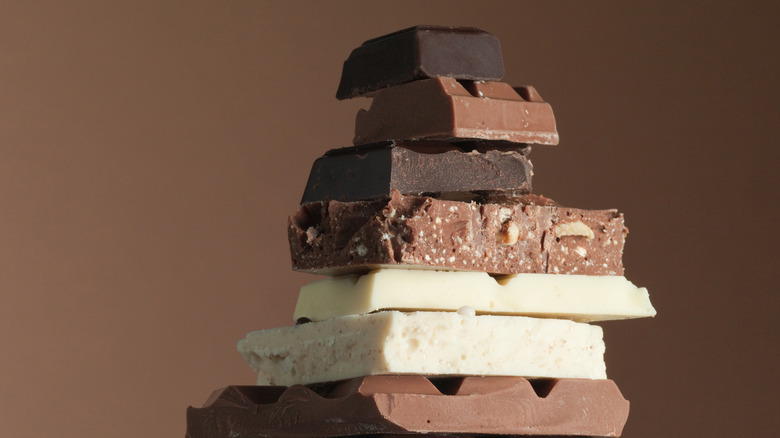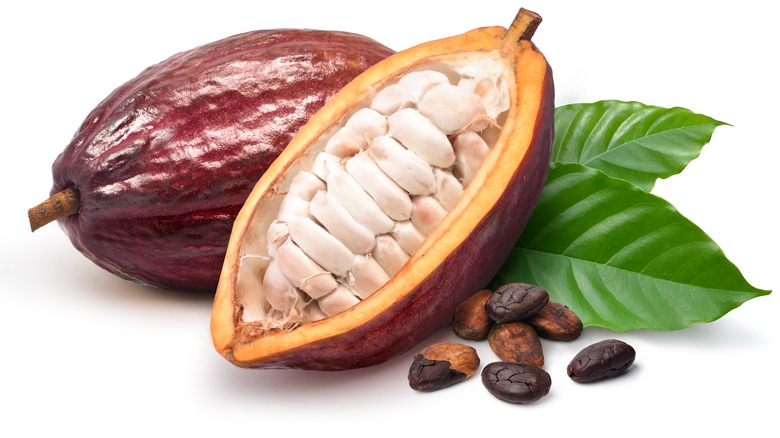Cacao Percentage Matters When It Comes To Baking With Chocolate
Whether or not cacao percentage matters when baking with chocolate has long been debated. Some bakers swap percentages regularly, while others always stay within the exact recipe details. The truth is, cacao percentage does matter when baking with chocolate if you want a recipe to turn out exactly as intended, but there are times when using chocolate interchangeably can work. So, when does cacao percentage make a difference? If you're melting chocolate for molds, making homemade chocolate, creating a mousse, or working on a fussy ganache, it's best not to stray too far from the suggested percentage.
You can swap milk for dark or semi-sweet chocolate when making cookies, brownies, or other simple baked goods. (The taste of your product will be different if you mix chocolates, but that's half the fun of baking.) Mixing chocolates can be an excellent way to experiment with different flavors and learn what chocolates go best with other ingredients.
What does cacao percentage mean?
The cacao percentage listed on a bag of chocolate indicates how much of that chocolate comes directly from the bean. Super-dark chocolate has a much higher cacao percentage than milk chocolate because dark chocolate is purer than milk chocolate, which has milk, sugar, and potentially other additives.
A 70% dark chocolate bar, for instance, has 30% additional ingredients (milk, sugar, etc.). White chocolate comes from the cacao bean but does not contain any cocoa and is often a mix of sugar, cocoa-butter, cream, milk, and flavoring. Some white chocolate also contains oils and additional sweeteners, but pure white chocolate does exist and can be used in many baked goods.
Not all percentages are the same, though. One brand's dark chocolate might taste very different from another's, and that's because of the way that the chocolate is processed. This is why it's essential to taste chocolate before baking with it (some brands have a grainy texture, and others have a waxy taste).
Ingredient compensation
If you want to experiment with different chocolate percentages, remember that chocolate with a very high percentage doesn't contain much sugar. Add (slightly) more sugar to your recipe, or use one part dark chocolate and one part milk. Also, think about how chocolate will taste when your baked item is finished. Biting into a melted mouthful of bitter dark chocolate might be pleasing to some people, but it likely isn't the taste you're going for.
Just as a chocolate chip cookie made with all dark chocolate might turn some people off, a chocolate mousse made with milk chocolate may be too sweet. In most cases, you can swap one chocolate for another, but this trick won't work well if you're trying to make homemade chocolates, requiring chocolate with a higher percentage of cocoa butter.
Baking is more fun when you experiment with chocolate — just remember to compensate for that chocolate's ingredients.


